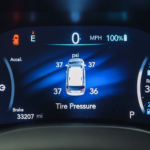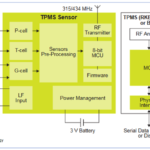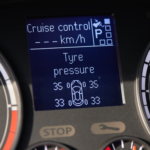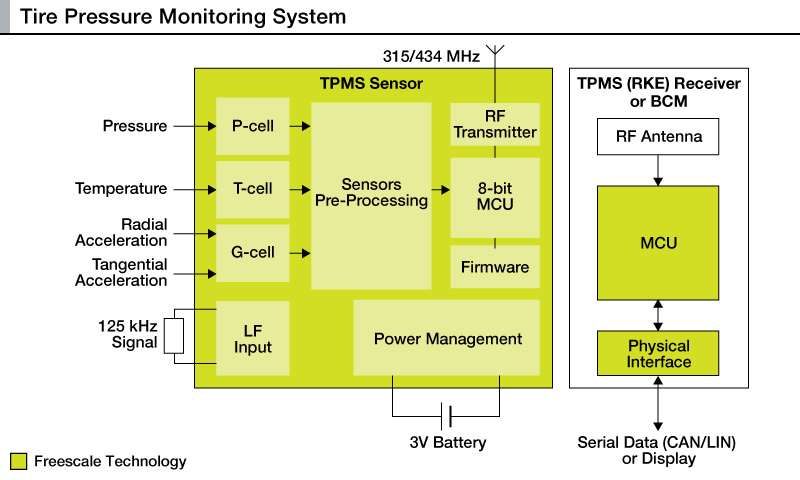Sensor-based monitoring systems for tire pressure can warn of potential problems, but there’s much more to the story than just a pressure measurement system.
During the comments phase before the formal safety mandate was published per the legislative direction, the automotive-related communities had differing views on the need or wisdom of the electronic TPMS:
- The auto manufacturers were concerned that it would raise the cost of every car by about $200 to $300 and add to their BOM and manufacturing complexity (consider this in the context of the current automotive-IC shortage).
- Safety advocates and safety-focused consumers were strongly in favor of it, using the almost irrefutable argument that “if it saves just one life, it’s worth it.” Note, however, that the TPMS does not help in the most significant cause of tire-related accidents – a sudden blowout due to hitting obstructions in the road.
- Average consumers had mixed views related to the upfront ownership costs of TPMS, but it sounded like a good idea; there didn’t seem to be any other downsides, and the cost factor seemed acceptable Some consumer and car-care advocates said it would make more sense to have car drivers look at their tires to see if any were low before they headed out.
Realistically, though, this “checklist” approach was not going to happen, and there was even a technical argument against it. Unlike bias-belted tires in use up to the 1980s and 1990s, the radial-ply steel-belted tires, which became mainstream in the 1990s (due to technical advances and superior performance), did not change as much visually when their pressure was lower. As a result, it was much harder to look at the tires to get a sense of their pressure status; instead, drivers would need to measure them regularly with a gauge, and that was asking a lot of average drivers (Figure 1).
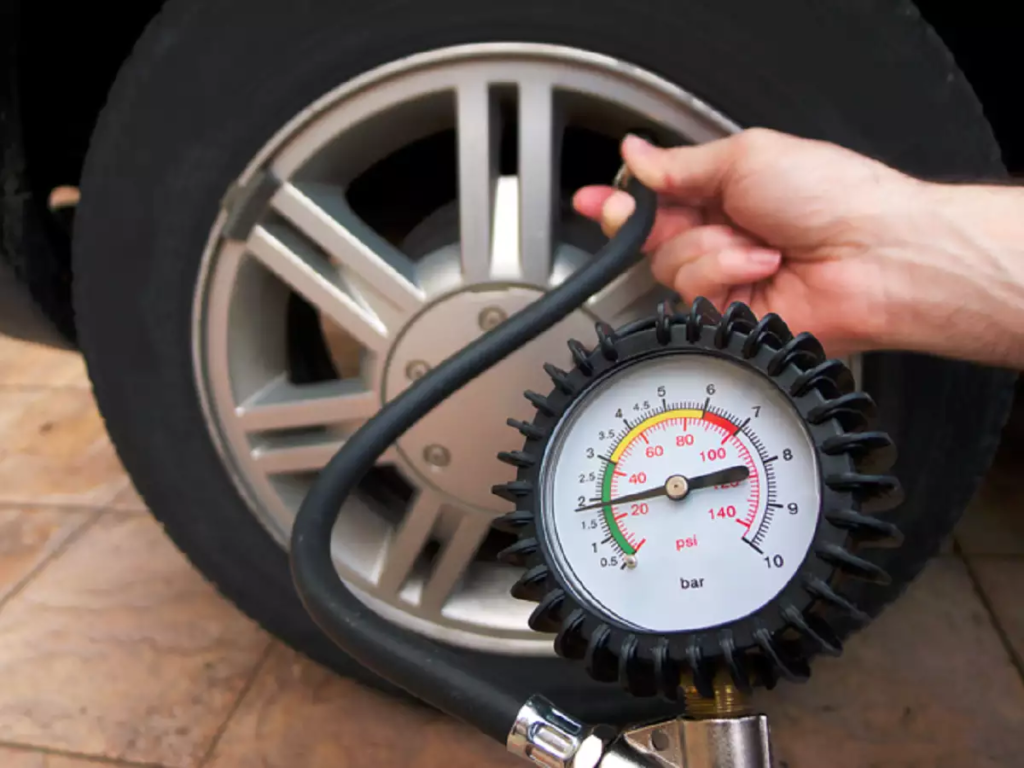
(This is yet another example of where advances in one area – in this case, tire-fabrication technology transitioning from bias-belted to radial-belted construction – transform a related situation; here it is the reduced practicality of easily checking tires visually. This phenomenon is sometimes known as “the law of unintended/unforeseen consequences.”)
- Finally, IC and related electronics vendors were ecstatic about it since it guaranteed a market of at least 40 million units per year for new cars, conservatively assuming sales of 10 million new cars/year in the US alone (and another large number for ongoing replacement units “down the road” so to speak; more on this later).
The indirect alternative
Measuring tire pressure via an embedded, in-place sensor is a direct measurement but a relatively costly one when the total system cost is calculated. For this reason, some car vendors said that there was an indirect approach that could serve the same function yet could be achieved by “inferring” a lower pressure.
How would this be done? The rpm at each wheel would be measured via a relatively simple magnetic sensor usually based on the Hall effect, and most cars already had this sensor for other reasons. Even if they did not, it would be a much simpler, less costly, and far easier-to-install addition compared to the electronics and mechanical hardware required by the direct approach.
The idea is that if one wheel shows higher rpm, it must be smaller than the others and thus have lower pressure. The actual pressure difference could be determined by a lookup table, in theory. Despite the conceptual attractiveness of this comparative indirect approach in contrast to the absolute direct method, it was not accepted as a viable approach for several reasons:
- The change in tire diameters and “rolling circumference” for radial tires is relatively small, partially due to the surrounding steel belting, even with a 25% reduction in pressure; thus, the difference in rpm is also quite small. According to one anecdotal source at a Subaru blog, “a 2-psi change in tire pressure (above 26 psi) results in a 1/32″ change in radius… and therefore a 2/32″ change in diameter. … a little over 3/16″ change in circumference”; other sources had similar results (Figure 2). Since the tire is spinning at high rpm, centrifugal force also slightly affects tire flattening and resultant diameter.

In short, unlike gas in a stretchable enclosure such as a balloon, Boyle’s law (“for a fixed mass of an ideal gas kept at a fixed temperature, pressure and volume are inversely proportional”) does not apply; there would have too many subtle correction factors for this complex relationship.
- the indirect approach is misleading if all the tires are already below nominal pressure. In other words, rather than looking for a 25 percent drop versus a correct 35 PSI tire, you might be comparing the tires to the highest of the four, which might be only at 30 PSI. In such a scenario, the TPMS would indicate all well when it is not.
- the indirect approach could also yield a false low-pressure result if one tire is much higher than the nominal yet is used as the standard for comparison.
Thus, despite the cost and implementation attractiveness of the indirect comparative measurement method, it was not approved.
The next part of this article looks at the technical details and implementation specifics of the TPMS system.
EE World related content
EEPROM-configurable IC enables easier development of TPMS modules
Smart Tires Pave the Road for Future of Autonomous Cars
When tire pressure monitoring gets smart
Miniature transponder coils target uses in tire pressure monitoring
References
TPMS Background and History
- Schrader TPMS Solutions, “Schrader History”
- CarID, “What Is The History Of Tire Pressure Monitoring Systems?”
- Gregg’s Automotive, “The Story Behind Tire Pressure Monitoring System (TPMS)”
- TMPS Direct, “A Brief History of TPMS”
- Wikipedia, “Firestone and Ford tire controversy”
TPMS Operation
- Tirebuyer, “What is TPMS (Tire Pressure Monitoring System)?”
- Wikipedia, “Tire-pressure monitoring system”
- Inertion, “The Better Way to Fill Your Tires”
- TiresPlus, “Tire Pressure Monitoring System (TPMS)”
- TMPS Direct, “TPMS Sensor Batteries”
- Priority Tire, “TPMS 101: What Is it and How it Works?”
- Car and Driver, “A Tire-Pressure Sensor Can Save You From Having a Blowout”
- How Stuff Works, “How Tire Pressure Monitoring Systems Work”
- Mechanic Base, “How to Reset Tire Pressure Light (TPMS) – By Car Model”
- Autel, “MaxiTPMS TS401”
- Subaru 2010, “How much does change in tire pressure affect tire circumference?”
TPMS ICs and Components
- Melexis, “World’s smallest TPMS solution”
- NXP, “Tire Pressure Monitoring Sensors”
- NXP, “TPMS Selector Guide”
- NXP, “A Global Solution for Tire Pressure Monitoring Systems”
- Infineon, “Tire Pressure Sensor (TPMS)”
- Infineon, “SP400-11-11 Automotive Tire Pressure Monitoring Sensor”
- Infineon, “SP40PLUS Tire Pressure Monitoring Sensor”

